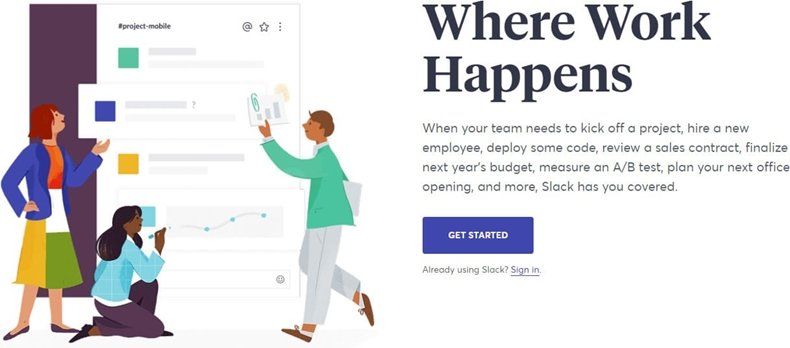By closely examining how a customer is acquired, retained, and (potentially) lost—call it the customer lifecycle—you can determine the points of strength and weakness of the process, and attach relative values to your customers based on how long they've bought from you and the journeys they've taken.
That will help you improve efficiency in your marketing and support spend, and align your efforts with your main profit drivers.
The goal is to consistently achieve iterative improvement by regularly examining your customer acquisition and retention processes and identifying opportunities to make them better.
This article will get into the specifics of how you can assess your customer lifecycle so that you improve it. Let's begin.
Map out your successes and failures
Before we get to examining what your marketing process looks like today, you must learn all you can from how you've handled customers and prospective customers thus far. So take your most notable case studies—your biggest triumphs and your greatest failures—and map them to customer lifecycle stages to see what you can glean.
Now, everyone naturally agrees that a customer lifecycle has stages, but opinions differ on what exactly they should be. That said, it doesn't really matter which labels you use; the important thing is that find a breakdown that makes sense when applied to your sales funnel.
For the sake of this article, we'll use the following structure:

Fit as many of your relevant cases as you can into this structure (or your preferred equivalent). Either when you've thoroughly impressed customers or when you've driven them away, think about how far they made it down the sequence. Don't think too much about how any of it reflects on your business today; this is purely an opening exercise in identifying patterns.
Let's go through a hypothetical example from a SaaS company, since this holistic approach to sales stems from the extended needs of the SaaS model (replacing the sell-once-and-move-on approach with the sell-often-and-consistently concept).
Imagine the following case for a company that provides an easy-to-use mobile-optimized accountancy platform:
- Awareness: The customer saw the software advertised through Twitter and followed it to a compelling landing page.
- Consideration: The customer reviewed links to some basic resources about the system and direct comparisons with competitors.
- Purchase: The customer followed the solid checkout system and paid by PayPal.
- Experience: The customer couldn't find a required option, left a negative review, and let the subscription lapse.
From a case like this, you can quickly infer various things. For instance, the value proposition is evidently strong, but the combination of the provided resources and the included support system was unable to help them find the option they needed. This could suggest weak copy, poor design, or even a misleading presentation of the software.
You can also wonder why the customer in question wasn't contacted by a support team immediately following their negative review; perhaps they would have continued their subscription had they been given some manual assistance.
Review your activities and materials for each customer interest stage
Next, moving to the present day, take a very close look at all the activities and materials you provide in your effort to move people along your sales funnel.
Put yourself in the shoes of a stranger with relevant interests, and start investigating to see what you find. It's entirely possible that you've somehow completely overlooked an important step along the way, simply assuming that customers will find their own paths from point A to point C.
Returning to the structure we're using, what happens if you do nothing to support a prospective customer through the consideration phase? You make them aware of the product in the awareness phase, and provide a strong purchasing process, but leave the consideration phase to them... That's extremely dangerous.
Perhaps all the information out there about your product or software is horribly outdated or inaccurate. Maybe all the roundup reviews are very unflattering to your work owing to a misunderstanding. If you don't step in to ensure that the prospective customer has access to worthwhile comparison resources, you'll leave it to chance.
At all times, be suitably skeptical. Unlike B2C customers, B2B customers tend to know how the business world works, so don't give your materials the benefit of the doubt. At a minimum, ask the following questions at each step:
- Does your company seem professional?
- Does what's on offer seem worthwhile?
- Is the presentation consistent?
- Can you find the information you need?
- Is it clear what you can do next?
- Is there assistance if you're unsure?
It's important to get into as much detail as you can, because that will minimize the risk of overlooking something significant—but it's also important to be succinct and slick with your presentation, because B2B buyers are busy, time-poor, and not inclined to spend huge amounts of time trying to parse your documentation.
Smart B2B businesses find clever ways to communicate complex topics and features very simply, ensuring that their consideration resources scale according to the needs of the user (defaulting to high-level summaries and digging down into details through expanding sections).
They know how to use visual storytelling, starting with glossy visuals and snappy features, then scrolling (or panning) to elaborations and links elsewhere for those eager to know the specifics. I particularly like how Slack starts its funnel:

"Where Work Happens" is a great broad-strokes introduction to the software, supported by the crystal-clear illustration depicting people working in a shared environment to carry out recognizable administrative tasks. Then the main paragraph sweeps through various supported actions, never explicitly identifying Slack as software because that's made clear through the iconography of the illustration.
And anyone who doesn't understand what Slack actually is can click the "Why Slack?" link at the top of the page (though I'd like to see the information provided down the homepage for additional clarity).
Collate analytics data and feedback
Assuming there's a significant digital component to your sales funnel, you'll want to first extract your analytics data (metrics are vital for optimization).
Behavior flow, for instance, will give you an idea of how visitors are using your website—which pages they're spending time on, what actions they're taking, and what (if anything) seems to be driving them away. Try to place activity in context: what part of the customer lifecycle is each section designed to support? Is there a mismatch between a page's intended purpose and its current state?
In addition, you'll want to ask all the customers you ever wanted to work with what made them choose to work with you (or avoid you, depending on the case), and get some truly fresh perspective by testing your funnel stages with some people entirely unfamiliar with your business.
Look for a cost-effective usability testing service, or lean on acquaintances, friends, and family members to source some unknown testers. Real-world use will help provide the context you need for the analytics data, and more clearly expose the points of irritation that might be too trivial to generate complaints but significant enough to lose you customers.
Request (and be willing to handle) complete honesty. There's no room for being precious when you're committed to improvement. If your customers criticize you or impartial users don't actually find you, you need to learn, improve, and redouble your efforts.
Even if someone deems your solution the best option today, you need to pursue layers of protection; a customer who only sticks with you owing to the deficiency of your rivals will easily be tempted away if one of them implements improvements. Get your standard as high as possible.
Prioritize the identified customer lifecycle issues appropriately
Having investigated prior customer journeys (and near-misses), reviewed your marketing funnel, and solicited detailed feedback, you'll be in a position to prioritize the list of identified issues based on their significance and (importantly) how cost-effective it will be to address them.
Given that even a small improvement in your customer lifecycle can produce greater loyalty and more spending, I suggest implementing the easiest changes first.
I also suggest paying close attention to the comparison phase of the consideration stage, because there will be much to learn from how your competitors present themselves. The best approach, often, is to see what your rivals are doing better than you and essentially look to marginally outperform them. Nullify their strengths and you'll be in a much better position.
Aside from manually visiting websites and trialing software to see what's being done well and what's being done poorly, you can use competitor analysis tools to get high-level views of where you stand in the marketplace. Following that, you can take advantage of customer experience tools to make fast improvements: For instance, Nickelled allows you to rapidly create website walkthroughs to add clarity to any page; if action clarity is an issue for your lifecycle, that's something you might want to try.
* * *
Ultimately, you should aim to be within a reasonable distance of the average quality for every aspect of the customer lifecycle, and try to find an area in which you can excel. You can then turn that excellence into a big promotional point. Ensure that your customer lifecycle achieves a consistent level of support, polish some outstanding features, and you'll forge a platform that won't easily be beaten.
To sum up, let's recap the action plan we've looked at thus far:
- Break down your historical hits and misses.
- Go through your sales funnel to assess each step.
- Collect in-depth feedback and analytics data.
- Prioritize the most cost-effective improvements.
Customer lifecycle assessment isn't about creativity or innovation—it's an arduous game of steady improvement, painstakingly identifying weaknesses so you can determine how to eradicate them. With the potential rewards of optimizing your customer retention process being so significant in the B2B world, it isn't something to give short shrift. Commit time and effort to the process and you'll eventually see the rewards.
More Resources on the Customer Lifecycle
Four Steps to Maximizing Customer Lifetime Value
Forget the Funnel: Join the Buyer's Journey With Lifecycle Marketing Instead
Lifecycle Marketing for Subscription-Based Services: Four Subscriber Personas




